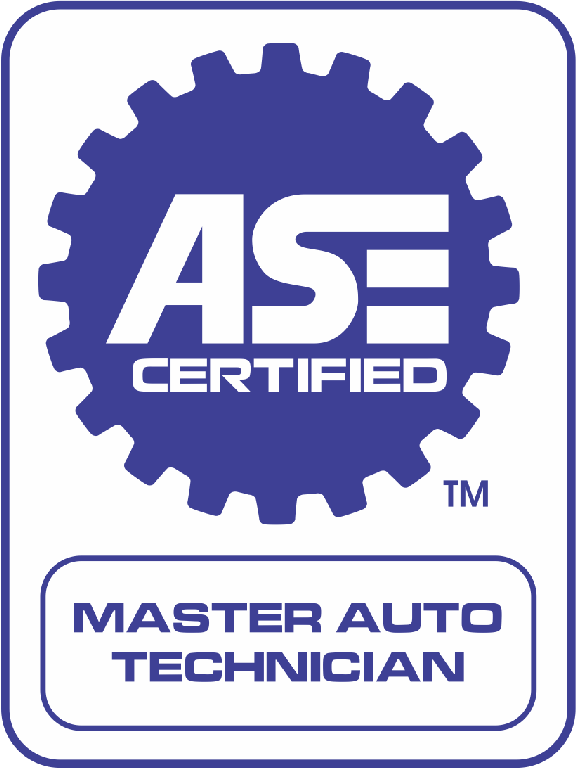
There are some simple things you could do to quickly repair a broken window regulator. These simple fixes are usually quick and inexpensive. You can learn more about common causes and how you can fix broken window regulators by yourself. Repairs can be done yourself to avoid costly repairs and save money. These repairs can be done quickly and easily. These steps are easy to follow! And remember to stay safe while working on your car!
Temporary fix
The most common reason for a window regulator breaking is misalignment. If the mechanism is not aligned properly, the window will stop moving and remain in one place. You will need to remove the screws that secure the regulator. For checking the gear teeth, you can use a screwdriver. By removing the door panel, you can check the track on which the regulator moves. If it has small wheels, the regulator could also become stuck.

You may need to replace your entire regulator assembly if the motor fails in your window. First, unbolt the bolts holding the regulator to the glass. After removing the bolts, ensure someone is holding the glass. Otherwise, the window may shatter and become impossible to open or close. This is not permanent and can lead more problems. It is possible to take your vehicle to an auto repair shop.
Common causes
If the window won't open or close properly, you can use the following quick fix to replace the broken regulator. First, make sure that the window regulator is not obstructed. This is often caused by debris on the window track. Clean the track and inspect the gear teeth. Sometimes, the window regulator is simply misaligned. In these cases, it should be replaced. You should contact a professional if you are not able to find a suitable replacement.
Wear and tear is the leading cause of broken regulators. The regulator's parts can get damaged or broken over time. Furthermore, they are more vulnerable to break due to the weight of your window. Lubrication may be able to resolve the problem. If the window continues to not move, you might try taking off the door panel and looking around. You can also use either duct tape or a rubber wedge to secure the glass.
Cost
The cost of replacing a broken window regulator quickly can vary depending on your car's make and model. The overall cost will depend on the type and amount of labor required. Some cars use a mechanical window regulator that uses a complicated gear system to raise and lower the window. These parts are more expensive and can run into the hundreds. A simple repair will usually cost less than $200.

To begin repairing your window regulator, remove the window shutter and remove the motor. The window shutter will be stuck, and the motor will not work. You can make this simple repair by following these steps. To remove the regulator, remove the screws holding the window shutter in place. Be careful not to break the glass in the process! Make sure you check your window regulator carefully to make sure it works before putting it back together. It could jam or cause an accident if you don't inspect it properly.
FAQ
What is the distinction between a mechanic or an automotive technician?
They are both similar, but not identical. A mechanic repairs cars and an automotive technician performs maintenance.
A mechanic must have good manual dexterity and be able to perform simple tasks quickly. They must also be able to diagnose problems accurately and repair them effectively.
An automotive technician requires more technical skills than a mechanic. They need to be able use tools such drills and wrenches, and read blueprints.
They must also be able perform complex procedures safely. They should also be familiarized with the different types of engines as well as electrical systems.
They should also be able understand how different parts interact.
This means that mechanics usually make less money than automotive technicians. Both jobs offer many possibilities.
What jobs are available for car mechanics?
For car mechanics, there are three main areas for employment:
-
Automotive repair shops
-
Dealerships
-
Independent garages
Automotive repair shops
This is the place most people begin to consider becoming mechanics. It's the easiest way for most people to get started. You can either work in a shop run by someone else, or start your business.
If you are interested in working at a shop you will need to apply for membership to a union. Once accepted into the union you will be trained by the union.
You'll be ready for work once you have completed the training.
Register with the government if you want to open your garage. After you have registered, you will need to meet certain standards.
You will receive a license to run your garage once you have registered.
Your license allows for minor repairs and spare parts sales. It won't permit you to fix serious engine problems.
In addition to selling spare parts, you'll also be expected to offer advice and guidance to customers.
Dealership jobs
Most dealerships employ mechanics who specialize in one area of the car. They might specialize in one area, such as brakes and tires.
Some dealerships have the option to hire general mechanics who can take care of all aspects.
These positions often require applicants that they undergo special training before being allowed work. This means employers can choose which candidates are best suited for their role.
Some dealerships will even hire graduates right out of university. These graduates are familiar with the fundamentals of mechanical engineering so they can easily learn about cars.
Independent garages
Independent garages don't belong to any particular dealership. They are more focused on providing top-quality service.
Independent garages have the ability to afford higher wages, as they aren’t associated with any one company. This makes them generally more well-paid than jobs at dealerships.
However, independent garages do not necessarily offer better workplaces. Many business owners prefer to manage their own businesses rather than delegating responsibility to others.
It is possible to work long hours, but not have any control over the day.
Expect to earn lower salaries than if you were working in a dealership.
You can switch jobs easily. If you want to work at a dealership, then you simply need to ask your current employer if he would consider hiring you as a mechanic instead.
Alternativly, you can apply directly to the garage owner if you are interested in working at an independent garage.
It's not always easy to find a job. You can earn more depending on many other factors.
Consider, for example, what type of vehicle you are repairing and whether additional labor charges will apply.
Is it possible to work as an automotive mechanic?
It can be done. Many garages list their vacancies online. Many people simply apply for the fun of it. You can apply for several places to see if they are accepting student applications if you want to get your foot in their door. Another option is to ask family members and friends if anyone works in this industry. You might be able to refer someone.
Statistics
- There were 749,900 jobs available for automotive service technicians and mechanics in 2016, which is expected to grow by six percent through 2026. (jobhero.com)
- According to the BLS, the median annual salary for automotive service technicians and mechanics in the United States was $44,050 in May 2020. (uti.edu)
- The U.S. Bureau of Labor Statistics (BLS) reports that the job outlook for automotive service technicians and mechanics is expected to decline by 4% from 2019 to 2029. (indeed.com)
External Links
How To
How to properly diagnose and repair your vehicle
First, look at the symptoms of your car to determine if it needs repair. You can then follow these steps for a proper diagnosis of your vehicle.
-
Check engine lights. The dashboard light indicators, including the engine light, oil pressure gauge, battery light indicator, coolant temperature gauge and RPM gauge, should be checked. It could indicate that your vehicle is having problems.
-
Examine the treads of the tires. If the tires are worn out, they could cause problems with handling and braking. You should inspect the treads on your wheel. They should be smooth and clean. It is best to take off the wheels and remove them. Use a flashlight to see how well the treads are worn.
-
Monitor the level and consistency of your brake fluid. You should always keep track of the amount of brake fluid in your vehicle. This ensures that your brakes work properly. Low brake fluid levels could cause your brakes to fail when you apply pressure.
-
Make sure to test the suspension system. Vehicles usually have a suspension system that helps absorb shocks and vibrations while driving. It allows for better control, smooth acceleration, and deceleration. You might notice a wobbly feeling or uncontrollable shaking in your vehicle if it has a problem with its suspension. You can test if your vehicle has a suspension problem by putting weight on either the front or back axle to see how it moves.
-
Examine the steering column. The steering columns are what connect the steering knob to the rest. Steering columns can be damaged by accidents. It is recommended to replace any steering column that feels loose, or shakey.
-
Observe the exhaust pipe. The exhaust pipes transport gases from the combustion chamber to outside. Your cabin will be effected if your exhaust pipe cracks or leaks. Also, if your tailpipe is bent, you should fix it immediately.
-
Take a look under your hood. To check for unusualities, look under the hood. There could be fluid leaking from your engine. If you smell something strange coming from your engine compartment you should call a professional technician.
-
You should inspect your air filter. The outside environment collects dust and other particles in the vehicle's filter. Dirty air filters can cause your vehicle to run poorly. Replace your air filter regularly.
-
The fan belt should be checked. The fan belt is the link between the engine and the transmission. If the fan belt fails, the engine won't start. It's easy to replace the belt. All you need are a screwdriver & pliers.
-
Make sure you inspect the radiator hoses and hoses. The radiator hose carries water from the radiator to the engine. It can crack or become damaged and leak hot liquid onto an engine. To repair the hose, you will only need to use a pair needle-nosepliers and a wire brush.
-
Check the windshield wipers. Windshield wipers use electricity for snow and rain removal. If they stop working, they could leave streaks on your window glass. You can fix the problem by changing the washer fluid.
-
Verify the condition of your battery cables. The battery cables provide power for the electrical systems in your car. Always disconnect the negative wire before you replace batteries. Failure to do so can damage your alternator.
-
Make sure your headlights are working properly. Headlights help you see the road ahead. If they don't work properly, it can cause poor visibility. To check if the bulbs have gone out, you can inspect them.
-
Always check your lights. Lights warn other drivers when you approach them at night. If one doesn't work, it could distract you and lead to an accident.
-
You should inspect your brakes. Before you have a collision, brakes slow down your car. You could lose control of the car and cause a crash if they don't work properly.
-
Change the oil. Your engine will stay lubricated by the oil. It helps keep metal parts from getting too worn down. It is recommended that you change your oil at least once per month.